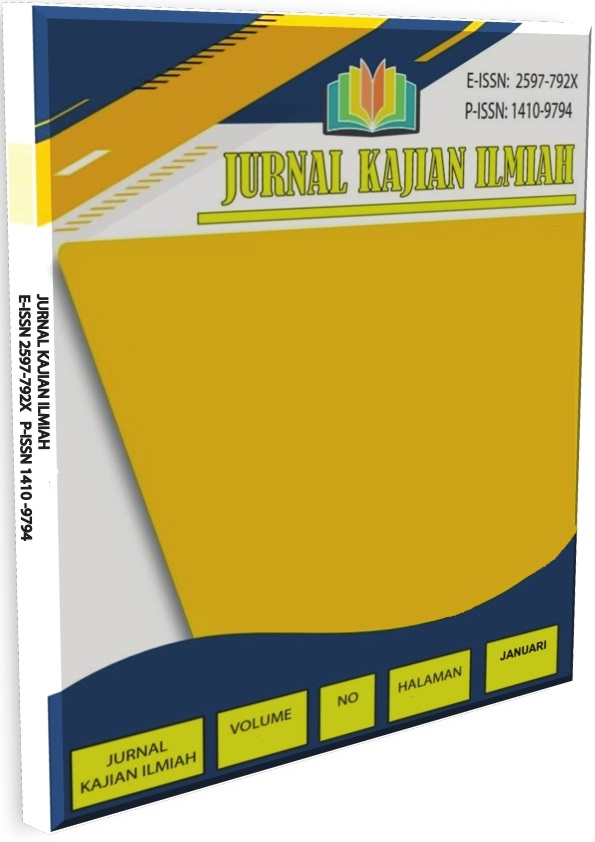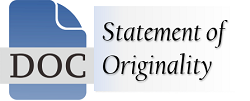Skala Penelitian Variabel Terprovokasi Dengan Melibatkan Responden Petugas Pengamanan Demonstrasi
DOI:
https://doi.org/10.31599/cd8fep20Keywords:
Instrument, Provoked Scale, ResearchAbstract
Police officers from the Mass Control Unit (DALMAS) are a police unit with the task of providing security against demonstrations. The chaotic conditions of the demonstration became a reality that they had to face while on duty. The rioting of the demonstrators not only poses a big risk, but in the rioting there are also efforts that can provoke DALMAS members to become emotional and aggressive, in other words provoked. The provoked variable is a very interesting study, but from the many results of research on aggressive behavior, a measurement scale that can be used to obtain quantitative data has not been found. This study tries to compile constructs and items to be able to measure the state of being provoked. The measurement construct was compiled and tested for conformity by involving 5 assessor panelists, and then 35 members of DALMAS were involved to conduct trials to determine the reliability of the items. The result managed to get a number of items that can be used to measure the state of being provoked, the measurement bits show a fairly accurate reliability. Although the existing items are able to measure variables, these results have not involved a large number of respondents.
Downloads
References
Aiken, L. . (1980). Content validity and reliability of single items or qustionare. Educational and Psychological Measurement., 40(4), 955–959.
Anderson, C. A., & Bushman, B. J. (2002). Human Aggression. Anual Review Psychology, 53, 27–51. https://doi.org/10.1146/annurev.psych.53.100901.135231
Aronson, E., Wilson, T. ., Akert, R. ., & Sommers, S. . (2016). Social Psychology Ninth Edition. https://doi.org/10.1037/11571-001
Branch, A. (2015). Emotional Autonomy and Parental Stylesas a Predictor of Positive Identity Style. The 2015 International Academic Research Conference, (October), 22–24.
Bushman, B. J. (2002). Does Venting Anger Feed or Extinguish the Flame? Catharsis, Rumination, Distraction, Anger, and Aggressive Responding. Personality and Social Psychology Bulletin, 28(6), 724–731. https://doi.org/10.1215/00127094-2795217
Crotts, K., Sireci, S. G., & Zenisky, A. (2012). Evaluating the content validity of multistage-adaotive Tests. 13.
Dewall, C. N., Anderson, C. A., & Bushman, B. J. (2011). The general aggression model: Theoretical extensions to violence. Psychology of Violence, 1(3), 245–258. https://doi.org/10.1037/a0023842
Hutahaean, E. S. H., Pertiwi, Y. W., Dayita Pohan, H., Perdini, T. A., & Bastoro, R. (2021). Efek Tayangan Demonstrasi Sebagai Stimulus Untuk Pengaruhi Aktivitas Denyut Jantung Sebagai Representasi Reaksi Kemarahan. Jurnal Kajian Ilmiah, 21(2), 159–170. https://doi.org/10.31599/jki.v21i2.572
Junaidi, M., & Marzuki, M. (2016). Konflik Komunal Nunu dan Tavanjuka di Kota Palu: Meniti Jalan Panjang Menuju Perdamaian. Etnohistori: Jurnal Ilmiah Kebudayaan Dan Kesejarahan, 3(2), 119–210.
Juujärvi, P., Kaartinen, J., Laitinen, T., Vanninen, E., & Pulkkinen, L. (2006). Effects of physical provocations on heart rate reactivity and reactive aggression in children. Aggressive Behavior, 32(2), 99–109. https://doi.org/10.1002/ab.20129
Long, K., Felton, J. W., Lilienfeld, S. O., & Lejuez, C. W. (2014). The role of emotion regulation in the relations between psychopathy factors and impulsive and premeditated aggression. Personality Disorders: Theory, Research, and Treatment, 5(4), 390–396. https://doi.org/10.1037/per0000085
Mauss, I. B., Cook, C. L., & Gross, J. J. (2007). Automatic emotion regulation during anger provocation. Journal of Experimental Social Psychology, 43(5), 698–711. https://doi.org/10.1016/j.jesp.2006.07.003
Miles, S. R., Menefee, D. S., Wanner, J., Tharp, A. T., & Kent, T. A. (2015). The Relationship Between Emotion Dysregulation and Impulsive Aggression in Veterans With Posttraumatic Stress Disorder Symptoms. Journal of Interpersonal Violance, 1(22), 1–22. https://doi.org/10.1177/0886260515570746
Pedersen, W. C., Denson, T. F., Goss, R. J., Vasquez, E. A., Kelley, N. J., & Miller, N. (2011). The impact of rumination on aggressive thoughts, feelings, arousal, and behaviour. British Journal of Social Psychology, 50(2), 281–301. https://doi.org/10.1348/014466610X515696
Reio, T. G., & Shuck, B. (2015). Exploratory Factor Analysis: Implications for Theory, Research, and Practice. Advances in Developing Human Resources, 17(1), 12–25. https://doi.org/10.1177/1523422314559804
Scott, L. N., Stepp, S. D., & Pilkonis, P. A. (2014). Prospective associations between features of borderline personality disorder, emotion dysregulation, and aggression. Personality Disorders: Theory, Research, and Treatment, 5(3), 278–288. https://doi.org/10.1037/per0000070
Sireci, S. G. (1998). The construct of content validity. Social Indicators Research, 45(1–3), 83–117. https://doi.org/10.1023/a:1006985528729
Sutatminingsih, R., & Tuapattinaja, J. M. (2019). Efektivitas Komunikasi Interpersonal dan Perilaku Agresif Pada Anggota Satuan Dalmas Poldasu. Jurnal Ilmiah Ilmu Komunikasi Communique, 2(1), 10–17.
Thompson, R. A. (2011). Emotion and emotion regulation: Two sides of the developing coin. Emotion Review, 3(1), 53–61. https://doi.org/10.1177/1754073910380969
Wahlström, M. (2011). Taking Control or Losing Control? Activist Narratives of Provocation and Collective Violence. Social Movement Studies, 10(4), 367–385. https://doi.org/10.1080/14742837.2011.614107
Wang, Y., She, Y., Colarelli, S. M., Fang, Y., Meng, H., Chen, Q., … Zhu, H. (2018). Exposure to nature counteracts aggression after depletion. Aggressive Behavior, 44(1), 89–97. https://doi.org/10.1002/ab.21727











_-_Copy1.jpg)




